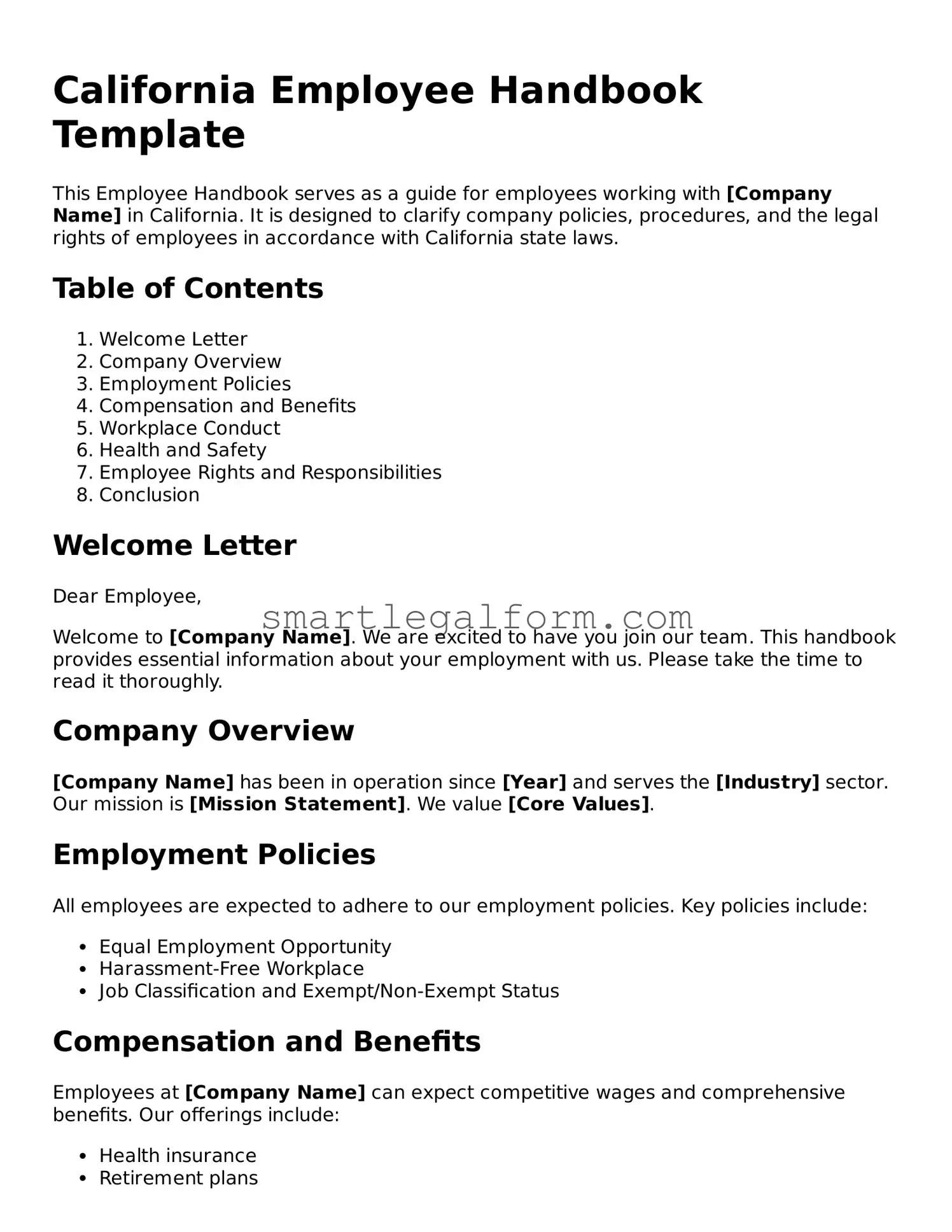California Employee Handbook Template
This Employee Handbook serves as a guide for employees working with [Company Name] in California. It is designed to clarify company policies, procedures, and the legal rights of employees in accordance with California state laws.
Table of Contents
- Welcome Letter
- Company Overview
- Employment Policies
- Compensation and Benefits
- Workplace Conduct
- Health and Safety
- Employee Rights and Responsibilities
- Conclusion
Welcome Letter
Dear Employee,
Welcome to [Company Name]. We are excited to have you join our team. This handbook provides essential information about your employment with us. Please take the time to read it thoroughly.
Company Overview
[Company Name] has been in operation since [Year] and serves the [Industry] sector. Our mission is [Mission Statement]. We value [Core Values].
Employment Policies
All employees are expected to adhere to our employment policies. Key policies include:
- Equal Employment Opportunity
- Harassment-Free Workplace
- Job Classification and Exempt/Non-Exempt Status
Compensation and Benefits
Employees at [Company Name] can expect competitive wages and comprehensive benefits. Our offerings include:
- Health insurance
- Retirement plans
- Paid time off
- Business travel reimbursements
Workplace Conduct
To maintain a professional atmosphere, we expect employees to exhibit proper workplace conduct. This includes:
- Respecting co-workers
- Follow dress code guidelines
- Arrive on time for shifts
Health and Safety
Our commitment to health and safety is paramount. We comply with all relevant California safety regulations. Employees should report any unsafe conditions or incidents promptly.
Employee Rights and Responsibilities
Employees have certain rights under California law, including:
- Right to fair pay
- Right to a safe working environment
- Right to file a complaint regarding workplace conditions
Additionally, employees are responsible for:
- Understanding their obligations
- Reading company policies
- Acting in good faith at all times
Conclusion
For any questions, please contact [HR Contact Information]. Once again, welcome to [Company Name]. We look forward to your success with us!
